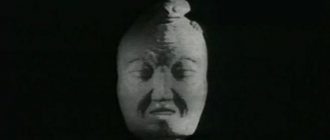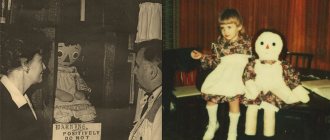- Brief information about the phobia
- Causes of globophobia
- Symptoms
- Diagnosis of the disorder
- Solution
- Existing methods
It has always been believed that the fear of balloons is a childhood problem. Research has revealed that many adults are prone to this type of phobia. The problem may seem comical, but looking at it from a psychological point of view, it can be noted that the fear of balls hides serious mental problems.
Globophobia - fear of balloons
Brief information about the phobia
A phobia never appears just like that; it is preceded by a strong emotional shock, which subsequently leads to mental disorder. What is the fear of balloons called? This is globophobia.
Balloons should be associated with the holiday and evoke positive emotions. The problem becomes relevant if, in childhood, a person received psychological trauma associated with loud banging. If a child heard the sound of popping balloons and was afraid of it, then he can retain his anxiety for a long time. In adulthood, sudden bangs, explosions of firecrackers and other similar sounds can cause a feeling of fear.
Causes of globophobia
A phobia can have various manifestations.
- A person may experience a feeling of fear while inflating a balloon. The problem may be associated with a negative experience when the process of filling the balloon with air was not successful: it burst from excess air and hit the face painfully.
- The phobia of flying away with a bunch of balloons also comes from childhood. The child may be frightened by the impressive size of the ligament.
- A helium-filled balloon flew away and never returned. An incident that impresses a small child so much can develop into a feeling of fear in adulthood.
Flying away balloons can scare a child and provoke globophobia
Causes of globophobia
For many people, a holiday without balloons is not perceived at all. Balloons are a symbol of fun and carefree. Often, not a single event for children is complete without them. Balloons are used to decorate graduation parties, birthdays, New Year's parties, and circus performances.
Currently, helium balloons have become extremely popular at both children's and adult events - store openings, exhibitions, shows, festivals. Balloons are great helpers in creating a mood. They have become an attribute of any holiday. And the question naturally arises: can bright, weightless balls hovering near the ceiling or ascending into the sky scare someone? Yes they can. Despite the fact that many children adore them, there are also those among them who are afraid of them. And globophobic teenagers, when they see balloons, try to hide as much as possible the feeling of anxiety that resides inside them, because they are afraid of ridicule from their peers.
Fear is an innate part of the instinct of self-preservation. Many kids feel fear at the sight of balloons, but as they grow up, their phobia gradually fades into the background.
It is difficult for children to realize that balloons are not dangerous, so adults are often unable to help children overcome this phobia.
Globophobia doesn't just happen. The occurrence of a phobia is preceded by emotional trauma, for example, a loudly bursting balloon near a child. A sudden, sharp sound can cause stress to a baby. The baby’s subconscious remembers this stress for the rest of its life. Later in adolescence, the sounds of exploding firecrackers will remind you of a childhood phobia.
Also, a child often experiences fear when inflating the balloon itself, especially if it has previously happened that a balloon filled with air burst, hitting him in the face. Growing up, even adults are afraid that the balloon may burst when it is filled with air and are often afraid to simply even pick it up.
A child may be frightened by an even larger bunch of balloons if he has never seen them before. Adults do not take into account the fact that little ones look up at the balls and therefore it is natural that inflatable objects can be disproportionately frightening. A negative experience of contact with balls is imprinted in the child’s subconscious, which in the future can provoke the development of a phobia. Globophobia is not taken seriously by many people; people think that the globophobe has invented something for himself, is inflating this problem and is a weak-willed person.
Symptoms
It is very easy to recognize a person who suffers from a fear of balls. The symptoms of such disorders are pronounced. People are terrified of balls and everything connected with them. People with such psychological disorders may experience the following problems with the body when they see the object of fear:
- tachycardia;
- heavy sweating;
- chills;
- stiffness in movements;
- dizziness or fainting.
There is also an irresistible desire to hide away from the object of your fear. People try to suppress such desires, but there are times when they behave inappropriately:
- close in on themselves;
- sit on the floor and begin to sway from side to side;
- hiding;
- Cover your ears with your hands.
Such symptoms require urgent consultation with a specialist.
What is globophobia?
Experts decided to call the fear of balloons globophobia; the name includes the Greek word phobia, meaning fear. You can be afraid of both the sight of an object and the loud sound that occurs when its integrity is violated. Sometimes the disorder transforms into a fear of any bubbles; a person may fall into a state of panic at the sight of bottles of soda or champagne. A reaction is possible through direct contact or when looking at an image.
This feature of the psyche is manifested by strongly pronounced symptoms.
Diagnosis of the disorder
The disease is paroxysmal in nature, many do not attach importance to it. The only exceptions are cases with panic attacks, which haunt a person with every contact with a phobia. Diagnosis of such a disorder is necessary to ensure that globophobia does not lead to other mental disorders.
A fear of balloons is easy to diagnose in childhood and easy to eradicate. If treatment is not carried out at an early age, then over the years the problem will lead to neuroses and stress.
What to do if a child is diagnosed with globophobia?
Often the names of diseases cause panic. Many parents, upon hearing the diagnosis of globophobia, are terribly scared and do not know what to do. They panic and try to find a way out of the current situation themselves. Some adults are embarrassed that their child suffers from such a phobia, while others simply do not attach importance to the problem that has arisen, ignoring the child’s condition and his fears. Thus, a boy or girl develops complexes that will interfere in later life.
You can call it different things, but you shouldn't be afraid of it. It is imperative to help the child. Adults should do everything possible to help the child get rid of fear.
Despite the seriousness of the situation, it is worth remembering that a phobia can be corrected if a specialist deals with it. The mild stage passes independently or with the help of a psychologist. The specialist’s tools include techniques such as modeling plasticine balls. It is believed that a person must face his enemy - panic. You can't defeat your enemies by hiding.
Treatment for fear of balloons in adults is of a different nature. An experienced psychotherapist will offer hypnosis when the phobia is corrected in a trance state. But this technique is only suitable for severe cases and should be used by a professional.
Not everyone knows about the existence of such a phobia as the fear of balloons. It occurs infrequently, but it turns out to be very dangerous because it does not go away without appropriate treatment. causing trouble for a person as an adult. Phobia is included in the list of the most ridiculous and unexpected fears of humanity. The lack of competent, timely treatment leads to the fact that the child, growing up, drowns more and more in his fear, gets a mental disorder, and the phobia is fraught with a real serious danger associated with the person’s condition and his socialization.
Solution
The sooner you start fighting the disorder, the easier it is to achieve the desired result. If a child is afraid of a bursting balloon, then you should gradually instill in him trust and love for the toy. You can suggest making balls from plasticine or drawing them on paper.
Try to avoid such a problem: if a balloon bursts next to your child, be sincerely surprised and laugh, then the child will perceive the incident as a game. Children copy their parents' behavior, so don't focus on fear.
It is more difficult to cure an adult from a phobia. The main emphasis to solve the problem is on contact with the irritant. The patient himself must recognize the pettiness of his fear and let it go.
The treatment method is that a person must let go of his fear. To do this, take a bunch of balloons and release them into the sky, symbolizing parting with the phobia.
You can be brave and pop the balloon with a needle. Don't close your eyes, seeing the mechanism in action will make it easier for you to perceive what is happening.
To treat a phobia, an adult needs contact with balls
Existing methods
After consulting a psychotherapist or neurologist, you may be prescribed medication. Sedatives in combination with sports and meditation have a positive effect. The cognitive method of therapy allows the patient to independently solve the problem with globophobia. The treatment is carried out in sessions: the person is mentally sent to a situation where he experienced an incident that led to fear.
Another method of therapy is to put the patient into a hypnotic state. This technique is considered the most productive and allows you to identify and eradicate the problem in just a few sessions.
Treatment of Globophobia
If the mental disorder is mild, you can try to overcome it on your own. To do this, you should use the following methods:
- try to conduct an introspection of your fear, and figure out what is the reason for the fear;
- gradually try to contact the object that causes fear;
- try to “let go of your phobia” in the form of balloons in the sky;
- try to realize the insignificance of your fear and switch to your favorite activity.
As for the child, it is necessary to maintain an atmosphere of security so that he relaxes and forgets the stressful situation. While playing, use balloons. Gradually instill a love for balloons. Draw them together with your baby on asphalt or paper. Sculpt from plasticine. And if it does happen that the ball accidentally bursts near him or flies into the sky, don’t focus on it, pretend that it’s part of the game. Immediately distract your child with his favorite toy so that this incident does not remain in his memory.
Recommendations
If your child shows characteristic signs of globophobia, try to be patient and attentive to his experiences. Since violence, in particular, humiliation and punishment for tears, will only worsen the situation.
In addition, do not force him to pick up the ball to make sure that it is not dangerous.
They seem cute and joyful to you, but the baby perceives them completely differently. And such actions may well cause him psychological trauma.
Hysteria is a call for help, that a little man cannot cope with his body and feelings. And your task, as a parent, as an adult, is to provide him with support, and not fall into the same state.
After all, if a child got scared, cried, but got hit on the bottom and a number of other punishments for this, he will shut up so as not to irritate with his “ugly” behavior, but the problem will not disappear.
He will simply suppress his emotions, as a result of which the phobic disorder will only intensify.
So just hug him tightly at such a moment, tell him that you love him and are next to him to protect him. Remove the object of fear, or go somewhere else. This will allow him to calm down.
And, naturally, go to a child psychologist. Don't expect the problem to solve itself; this usually doesn't happen with phobias.
Symptoms of the disease
The phenomenon of globophobia has quite pronounced symptoms. Although this condition is quite rare, a person with this type of psychological disorder can be easily identified.
So-called globophobes can experience fear not only upon direct contact with a frightening object, but also upon seeing images of balls. A meeting with a stressor is almost always accompanied by a panic attack, as a result of which a person may experience the following body reactions:
- sudden and profuse sweating;
- increased heart rate;
- desire to run away or hide;
- trembling in the limbs;
- dilated pupils;
- panic attack.
Children most often react to an irritant with loud crying, so such inappropriate behavior of a child should become an alarming symptom for parents. The question of what to do when a mental disorder called globophobia is detected is solely within the competence of doctors, therefore further study of the symptoms should be entrusted to a psychologist.
Treatment
Globophobia is a real and common phobia that affects many people. The first thing to do is talk to a psychotherapist. Individual counseling can help rationalize fear. There are effective treatments for phobias:
- Behavioral therapy and exposure
- Hypnotherapy
- Consulting
- Professional self-help books
- NLP
- Professional advice
- Medicines
Although the cause of fear is not fully understood, the unpleasant symptoms can be successfully relieved. Most people understand that balloons are not dangerous, but they feel powerless in the face of fear.
Symptoms
Seeing a ball on the street, in a photograph, or simply hearing its smell, a person’s blood pressure rises, his pulse accelerates, and he begins to actively sweat, experiencing fear and confusion. My hands and legs are shaking, as is my voice.
Often the stomach hurts, in the area of the heart. The breath is short and it seems that suffocation is about to occur.
There is a tingling sensation in the palms and feet, as if thousands of small needles simultaneously pierced the skin.
Nausea, vomiting, diarrhea, and dizziness are often observed. From fear, a person simply loses consciousness. For example, when a balloon bursts, it immediately falls to the ground.
There is a strong desire to run away as quickly as possible in order to hide in a secluded, safe place.
Therefore, a person can commit irrational actions, his perception of reality changes at the moment of experiencing horror. This is why he often gets injured and gets into unpleasant situations.
For example, he falls down the stairs or runs out onto a road with busy traffic, creating an emergency situation and risking his own life.
The most common symptom of a panic attack in a baby is excessive crying. He breaks free, closes his eyes and asks to be held, seeking support and salvation from adults.
Professional help
If you cannot cope with the problem on your own, seek professional help. There are many different therapies.
Hypnosis
By disconnecting from the outside world, it is much easier to focus on your problem, understand its cause and get rid of it.
A psychologist will help you get rid of your phobia
Group therapy
It is always easier to overcome your fears in a team if you are surrounded by people with similar problems. Either your leadership abilities will not allow you to retreat: “I want to help others by my example,” or you will be motivated by someone else’s victory over the disease: “If someone could do it, why can’t I?”











